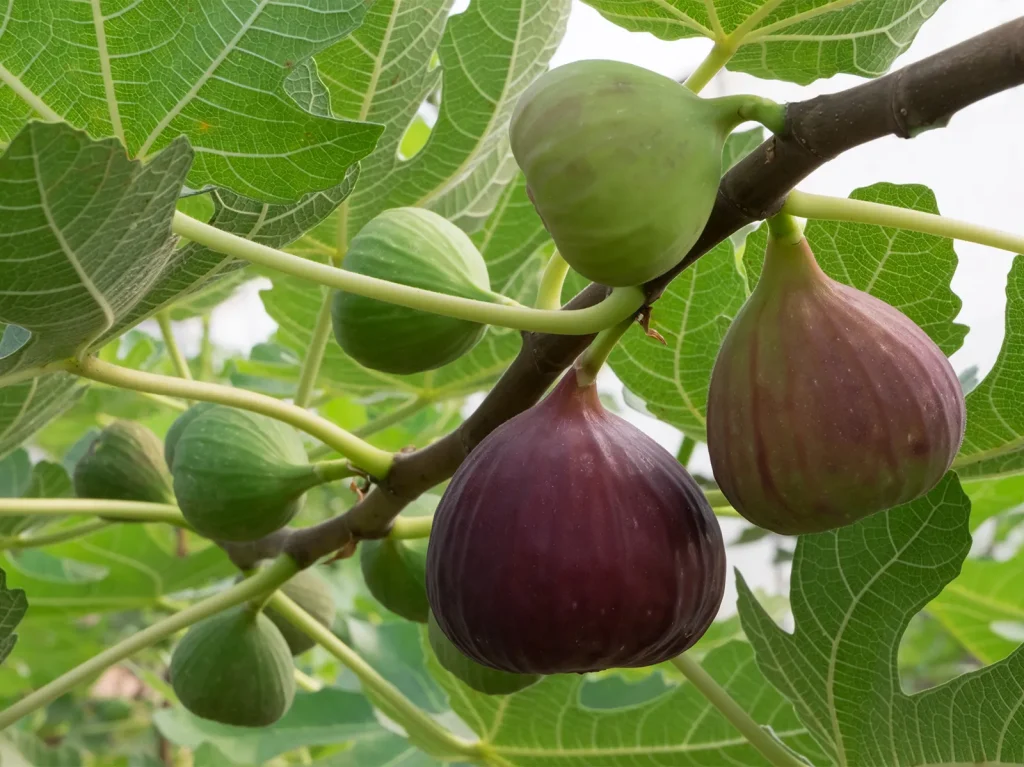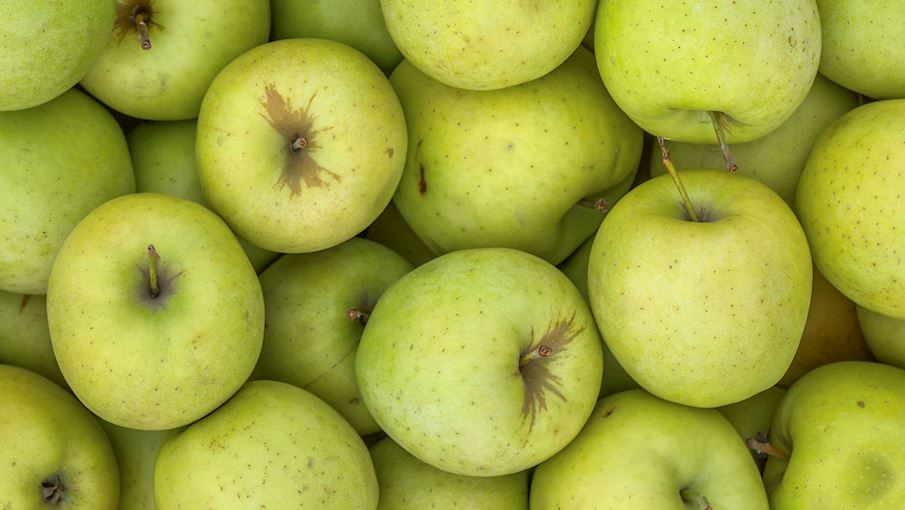Want to learn a thing or two about eating fruits in Tunisia? Right this way…
Typical Tunisian cuisine is centered around cured and slow-cooked meats in rich broths and spices. The ideal addition to the star of the show? Fresh Tunisian fruits and vegetables!
Tunisia’s climate is Mediterranean, mostly warm and dry. Its nutrient-rich soil means that the fruit trees of Tunisia are bountiful, often producing multiple harvests in one year.
What Tunisian Fruits are Most Commonly Eaten In Tunisia?
The most common fruits eaten in Tunisia are citrus, peaches, grapes, dates, and apples – however, there are so many more options when it comes to fruits from Tunisia!
If you want a more authentic experience, learning the names of fruits in Tunisian will help! Tunisian fruit names are often poetic and rhythmic in their pronunciation and helpful to know when ordering in smaller Tunisian towns and Governorates.
15 Tunisian Fruits To Eat When Traveling
It is important to learn that from cuisine to crops, Tunisia is a highly regionalized country.
What you find in Beja, you won’t necessarily find in Tozeur. This means it is highly recommended to eat what’s local, including fruit. Here’s our list of the 15 Tunisian fruits to try when visiting or traveling around Tunisia.
Prickly Pear – El Hindi

Prickly pear, referred to in Tunisia as Hindi, the King of Fruits, is probably the most intimidating fruits from Tunisia. It is delicious – if you eat it right!
These fruits grow on cactus plants laden with fine, sharp needles that cover the surface of the fruit. Vendors wear thick gloves and use metal tongs to remove the needles, so you don’t have to do the hard work. Once peeled, these Tunisian fruits are, of course, needle-free and fleshy with tiny seeds.
In summer, look out for street vendor stands with the orange-green fruits so popular with locals. If you can get past the spikes, the flesh is rich and sweet, with a watermelon-like flavor that is oh-so-refreshing in the warmer months.
As long as you’ve peeled them properly, prickly pears are best eaten raw, fresh and chilled.
Figs – Karmous

Fig trees in Tunisia have two harvests per year. Each harvest yields different fruits based on the rain and weather. Bither, the first harvest of the year, is green on the outside with pale red flesh. Because of their almost sour taste, Bither are often soaked in syrup and spices before eating.
El Karmous are purple-black on the outside, with a soft, sweet flesh that is delicious when eating raw. You can find Karmous in grocery stores around the country, or for the best local experience, bought from a roadside vendor.
Dates – Tmar/Degla

Typically found in deserts and dry, relatively temperate climates, the date palm is an evergreen plant with roots that deeply penetrate the earth in search of humidity. Date palms grow in oases in desert areas with suitable water levels for irrigation.
In Tunisia, date production constitutes an essential part of the agricultural outputs of the country. The vast majority of dates are harvested from the palm trees located in the oasis of southern Tunisia, most specifically from Tozeur and Kebili.
The Tunisian Degla is a must for the pleasures of the mouth both in the holly month of Ramadan as well as the rest of the year. Very satiating, it ranks among the best in terms of dates quality, worldwide.
Suggested Read: A Date with Tunisia
Loquat – Boussaa

Related to pears and apples, the name for this fruit in Tunisian is Boussaa and has long been associated with good luck. First introduced from Southeast China, loquats arrived in Tunisia more than 2000 years ago and have been endemic ever since.
Loquats are sweet, and best enjoyed raw, fresh and chilled.
Apricots – Mechmech

Apricot, called Mechmech in Tunisian, is a super tasty fruit with unique combination of sweetness and tanginess, packed with vitamins, fiber, and antioxidants. Apricots have plenty of benefits and they are extremely popular in Tunisia.
Peaches & Nectarine – El Khoukh

The peach in Tunisia, along with its variety the nectarine are fruits of origin from China. Today, it is a deep-rooted crop in the country. Peaches and Nectarines are grown mainly in the Northern East region along the Mediterranean coast.
There’s definitely nothing like sinking your teeth into a perfectly ripe, juicy peach on a hot summer day. It’s one of summer’s simplest pleasures, and it’s hard to beat for pure enjoyment.
Pomegranate – Romen

Along the shores of the Mediterranean, the pomegranate stands for prosperity and wisdom, love and fertility. To convey their passion, lovers would offer pomegranates to one another, and the seeds of the fruit, sown on the path of the newly wed, are harbingers of fertility.
Pomegranates have been cultivated in Tunisia for at least 5000 years. They were then introduced in Europe through Spain by the Arabs in the VIIIth century, and they became widely cultivated over there.
The Roman soldiers, who discovered the pomegranate for the first time during the Punic wars (third century BC), had never seen such fruit, and called it malum punicum (the apple of Carthage) or the Punic apple, or otherwise malum granatum for its abundant seeds.
The pomegranate is a wintertime fruit. The harvest season kicks off at the beginning of the fall season. For the early-maturing varieties, however, the season may start earlier and extend until mid-November for the late-maturing varieties.
Cherry – Hab Mlouk

Hab Mlouk are table cherries. These supreme quality red cherries have been grown in the northern-west of the country, more preciesly in Siliana, since they were brought there by the Romans.
These cherries are quite sweet, very flavorful, deep red in color and very crispy. These cherries are traditionally hand-picked at the moment of optimal ripeness to ensure fruit of superior quality.
Citrus – Kawares

Citrus fruits such as oranges, mandarins, and lemons are grown all across the country but more particularly in the North and Center. These regions are recognized worldwide for their century-long tradition of cultivation of citrus. Citruses grown in Tunisia have well-balanced acidity and sweetness due to warm Mediterranean climate.
The soil characteristics combined with the technical skills of Tunisian growers help produce more flavorful fruit with and intense color and fragrance.
Watermelon – Dela3

Watermelon is sweet, refreshing, and super delicious. It’s such a summer staple. The fruit itself it very rich as it contains many nutrients, is low in calories and is free of fat. One can eat all parts of the watermelon including the rind and seeds.
One of the things Tunisians love most about summers is opening a cooler full of sweet juicy watermelon on a hot day on the beach.
Melon – Batikh

Melon is estimated to be more than 10,000 years old. Melons were brought over to Tunisia by the Arabs and were extremely popular right from the start. Melons do have a pleasant, refreshing flavor. They contain about 90% water by weight.
Since they need a lot of heat, they’re always grown in countries with very hot, dry summers, like those in the Mediterranean, such as Tunisia, Spain, and Greece.
Grapes – Aneb

Grapes are delicious and packed with vitamins and minerals. One of the best things about grapes is that they protect us from sunburn, making them one of the prominent fruits in the list of summer fruits.
A lot of table grape varieties are found all across Tunisia.
Plum – El Aouina

Tunisia has a little over 20 plum varieties, each with different flavors and peculiarities that the popular fruit brings with it. Anyone looking for plums will quickly notice that they are not only available in the usual purple variety, but also in red, black, blue and yellow.
Apple – Tofeh

When it comes to Apples, there are plenty of varieties in Tunisia. The region of Sbiba in the Southern-west if the country known to produce very fragrant and aromatic apple variety, with intense flavors reminiscing those of grass, vanilla, and ripe fruits.
The fruit is very juicy and crunchy. Every stage of the production is executed with the utmost care, thus ensuring a product of excellent quality and characteristics.
Persimmon – El Krima

Persimmons are grown in Tunisia are deep red and soft, with an over-sweet caramel flavor. The Tunisian variety of persimmon is popular for its lack of seeds and strong taste.
Tunisian locals enjoy El Krima fresh and chilled. It is usually sold in grocery stores in the Northern-west of the country. Get yours and enjoy it as a topping on salads or on its own for a delicious flavor experience!
So Many Tasty Fruits to Eat in Tunisia
This list of Tunisian fruits is only the beginning – you might find many more fruits that delight your taste buds on your journey.
Make sure to get as much of your fruit from Tunisia at markets and street vendors. These are often the freshest and best way to enjoy all of the produce that Tunisia has to offer.
FAQ’s – Tunisian Fruits
Thanks to its location along the warm and sunny Mediterranean, Tunisia produces some of the best citrus fruit in the world. Without a doubt, lemons, limes, oranges, and also dates are the most famous fruits in Tunisia.
This is a tough one. It comes down to three fruits; oranges, grapes and dates. Tunisia is renowned for its oranges and dates. It does also produce one of the best wines in the World
